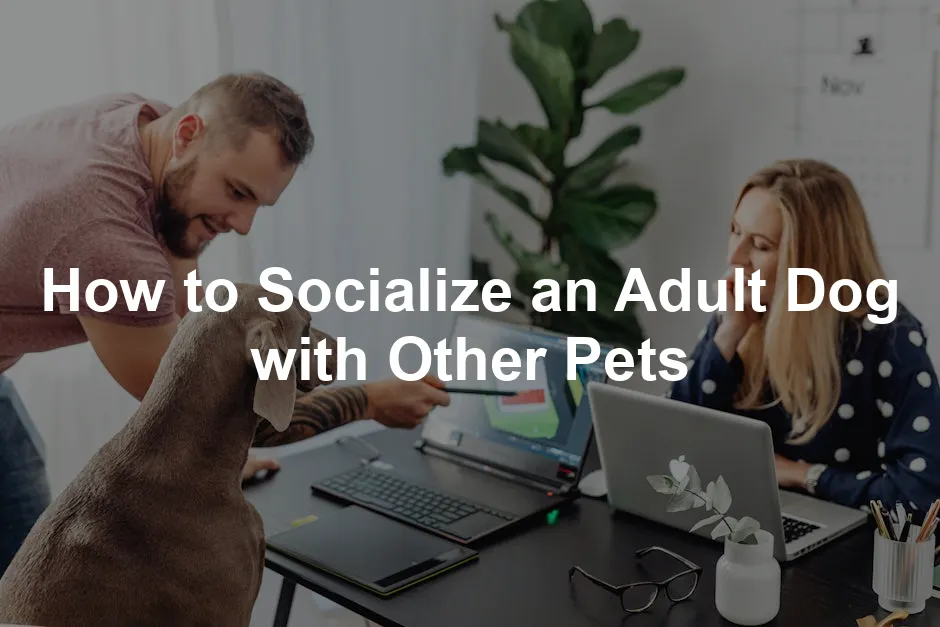Pros:
- Variety of Interactions: Dog parks offer a mix of dog personalities. This helps your furry friend learn to interact with different breeds and temperaments.
- Physical Exercise: Playing with other dogs is a great way to burn off energy. A tired dog is often a well-behaved dog!
- Social Skills: Regular visits can improve your dog’s ability to navigate social situations. They learn to read body language and cues from other dogs.
Cons:
- Overstimulation: Too many dogs can overwhelm your pup. Watch for signs of stress, like excessive barking or hiding.
- Unpredictable Behavior: Not all dogs at parks are well-behaved. Aggressive or hyperactive dogs can pose risks.
- Inconsistent Supervision: Dog parks are rarely supervised. This can lead to misunderstandings or conflicts between dogs.
In short, dog parks and daycares can be excellent for socialization, but proceed with caution. Always monitor your dog’s behavior and be ready to step in if necessary.
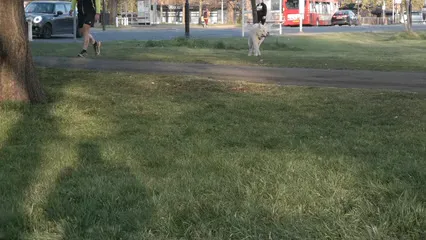
6. Professional Help
Sometimes, a little extra support goes a long way. If your dog’s socialization journey feels daunting, consider hiring a professional trainer. But when should you make that call?
- Persistent Fear or Aggression: If your dog displays consistent fear or aggression, a trainer can help identify triggers and develop a tailored plan.
- Limited Progress: If you’ve tried socializing techniques without success, a trainer can provide fresh insights and strategies.
- Overwhelming Experiences: If your dog becomes easily overwhelmed, a professional can guide you through gradual exposure methods.
Types of Training Programs:
- Group Classes: These classes offer controlled environments for socialization. Your dog can meet others while under the guidance of a trainer.
- Private Sessions: One-on-one training allows for personalized attention. This is ideal for dogs with specific challenges.
- Behavioral Workshops: These workshops focus on addressing fear or aggression through positive reinforcement.
Professional help can be a game-changer. Don’t hesitate to reach out to a certified trainer to ensure your dog has the best chance at becoming a well-socialized companion.
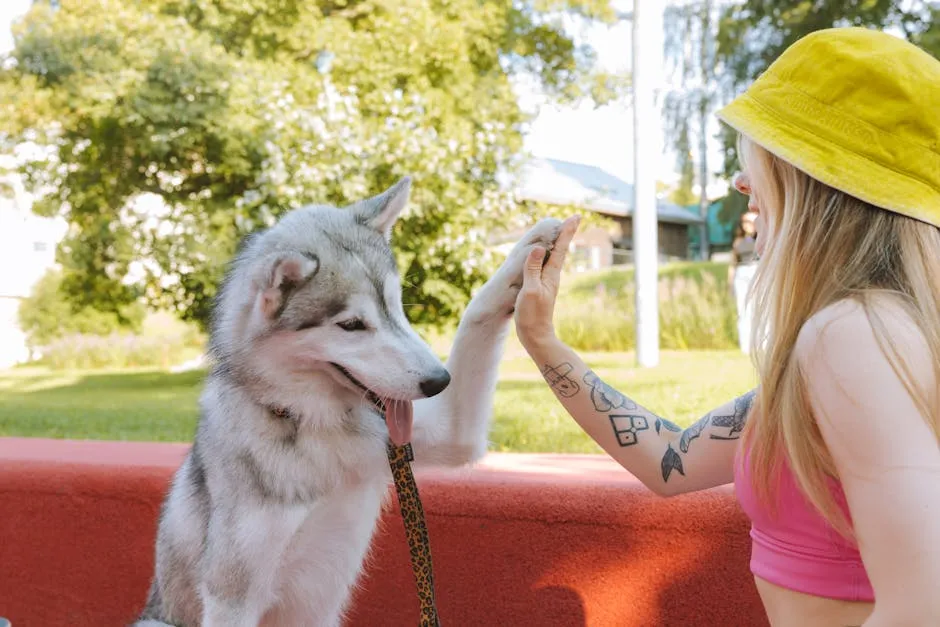
Overcoming Setbacks
Socializing an adult dog can feel like an uphill battle. But don’t throw in the towel just yet! Setbacks are manageable with the right mindset and techniques. First things first: breathe. Remember, socialization is a process, not a race. Here are some tips to help you navigate those frustrating moments:
- Stay Positive: It’s easy to get discouraged when things don’t go as planned. Keep your attitude upbeat! Dogs can sense your emotions. If you’re anxious, your dog will pick up on it. Stay calm, and your dog will likely feel more secure.
- Break It Down: If your dog struggles with a particular situation, simplify it. For example, if they react to other dogs, try observing from a distance first. Gradually reduce that distance as they become more comfortable. This way, you’re not overwhelming them.
- Celebrate Small Wins: Did your dog sniff another dog without barking? That’s a victory! Celebrate every little progress. Positive reinforcement can boost your dog’s confidence and encourage them to keep trying.
- Maintain Consistency: Consistency is crucial in training. Stick to your routine, and don’t skip sessions. Regular exposure to social situations, even brief ones, helps solidify positive experiences.
- Patience is Key: Socialization doesn’t happen overnight. Each dog learns at their own pace. If you encounter a setback, take a step back, reassess, and adjust your approach. It’s okay to slow down and allow your dog to catch up.
By implementing these strategies, you can effectively tackle setbacks and keep your dog’s socialization journey on track. Remember, every dog can learn to socialize, even if it takes a bit longer!
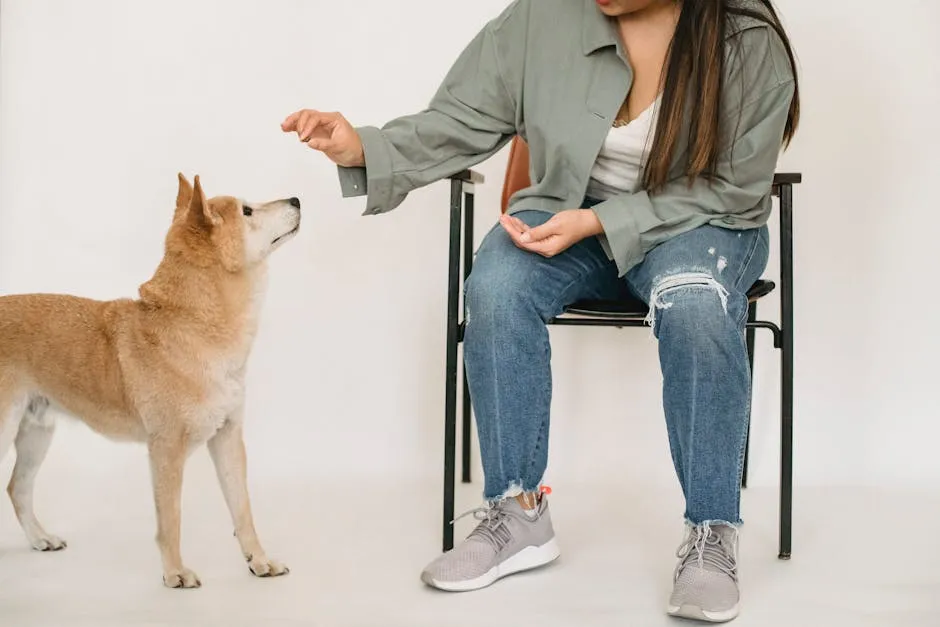
Conclusion
Socializing an adult dog isn’t just a trend—it’s essential. Remember the key points we’ve covered: start slow, choose the right companions, use positive reinforcement, and practice patience. Socialization can be a game changer for your furry friend, opening doors to new experiences and friendships.
As a dog owner, it’s vital to be patient and persistent. Your dog may not be a social butterfly yet, but with your guidance, they can learn to thrive in social settings. Don’t forget that it’s never too late for an adult dog to learn the ropes of socializing.
So, roll up your sleeves and get ready to embark on this rewarding journey. With love, consistency, and a sprinkle of humor, you can help your pup become the well-adjusted companion you’ve always wanted. Remember, every step forward is a step towards a happier, more confident dog!
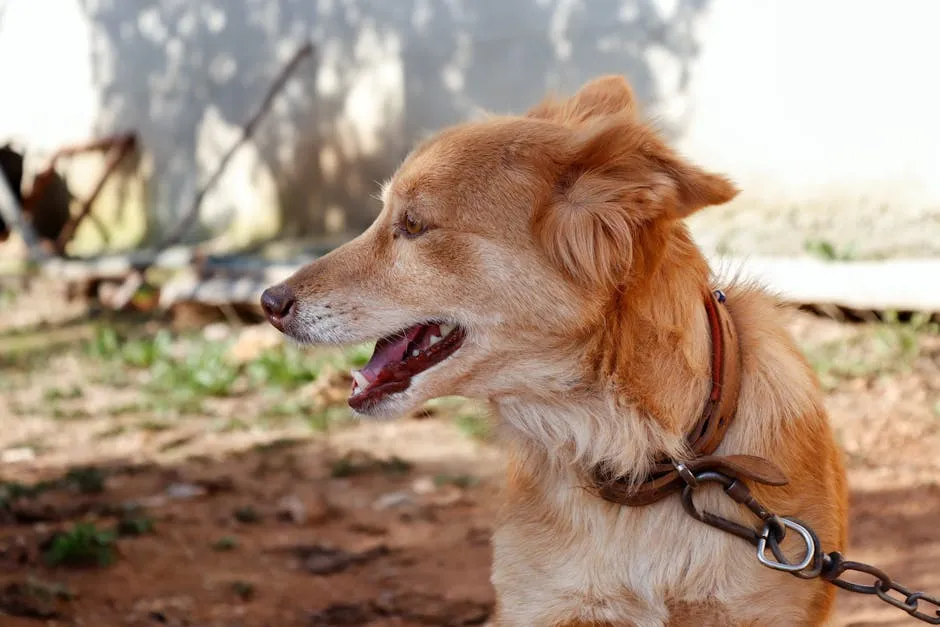
FAQs
Can all adult dogs be socialized?
Not all adult dogs will respond the same way to socialization. Factors like breed, past experiences, and temperament play significant roles. Some dogs may have had traumatic experiences that make them more cautious or reactive. Others may simply need more time to adjust. Consistent, positive exposure to new situations is key. With patience and the right approach, many dogs can learn to enjoy social interactions.
How long does it take to socialize an adult dog?
The timeline for socializing an adult dog varies greatly. Some may start showing progress within weeks, while others may take months. Factors like the dog’s background, age, and temperament influence this duration. Regular, low-pressure interactions can help speed up the process. Remember, every dog is unique; don’t rush the journey!
What should I do if my dog is aggressive towards other pets?
If your dog shows aggression, it’s crucial to address this behavior calmly. Start by identifying triggers. If your dog reacts negatively to other pets, keep a safe distance during walks or social encounters. Consider using positive reinforcement techniques. If the aggression persists, seeking help from a professional trainer or behaviorist is advisable. They can provide tailored strategies to manage aggression effectively.
Are dog parks safe for unsocialized dogs?
Dog parks can be a mixed bag for unsocialized dogs. While they offer a chance for socialization, they can also be overwhelming. Unfamiliar dogs and chaotic environments may trigger anxiety or aggression. For unsocialized dogs, it’s best to start in quieter settings. Gradually introduce them to the park once they show comfort around other dogs. Always monitor interactions closely to ensure a positive experience.
How can I tell if my dog is comfortable in social situations?
Observing body language is key! Signs of comfort include a relaxed posture, wagging tail, and playful behavior. If your dog approaches others confidently, they’re likely feeling at ease. On the flip side, watch for signs of discomfort, such as stiff body language, excessive panting, or avoiding contact. If you notice these red flags, it may be time to take a step back and reassess the situation.
Please let us know what you think about our content by leaving a comment down below!
Thank you for reading till here 🙂
Using effective positive reinforcement techniques for stubborn dogs can significantly enhance your dog’s socialization experience.
And while you’re at it, don’t forget to keep your pup hydrated during those outings! A Dog Water Bottle with Bowl is a perfect companion for walks and playdates, ensuring your furry friend stays refreshed and ready for fun!
Lastly, if you’re looking for a way to keep your dog entertained and mentally stimulated, consider investing in an Interactive Dog Puzzle Toy. These toys challenge your dog’s brain and keep boredom at bay, making for a happy and engaged pup!
As you embark on this journey, don’t forget to capture those precious moments! A Dog Photography Book can provide tips on how to get that perfect shot of your fur baby in action!
And for those messy moments, having a Dog Training Pads on hand can save your floors and help with the training process.
Speaking of training, don’t forget to grab a Dog Training Clicker to enhance your training sessions and make them more effective!
And for those pups that need a little more comfort, consider a Dog Bed with Memory Foam. They deserve a cozy place to rest after all that socializing!
Finally, if you’re planning to take your furry friend on adventures, a Dog Carrier Backpack can make travel much easier!
All images from Pexels
Introduction
Socializing an adult dog is as crucial as it is for puppies. Many believe that once a dog reaches adulthood, they are set in their ways. However, that’s a myth! Adult dogs can learn to interact positively with both humans and other pets at any age.
Proper socialization helps dogs adapt to their environment. This can lead to improved behavior and reduced anxiety. It’s essential for a more peaceful home, especially if you have other furry friends. Socializing can also enhance your dog’s quality of life, making them happier and more confident.
So, if you think your adult dog is beyond socializing, think again! With patience and the right techniques, you can help them flourish in social situations, turning them into the life of the party—or at least a polite guest.
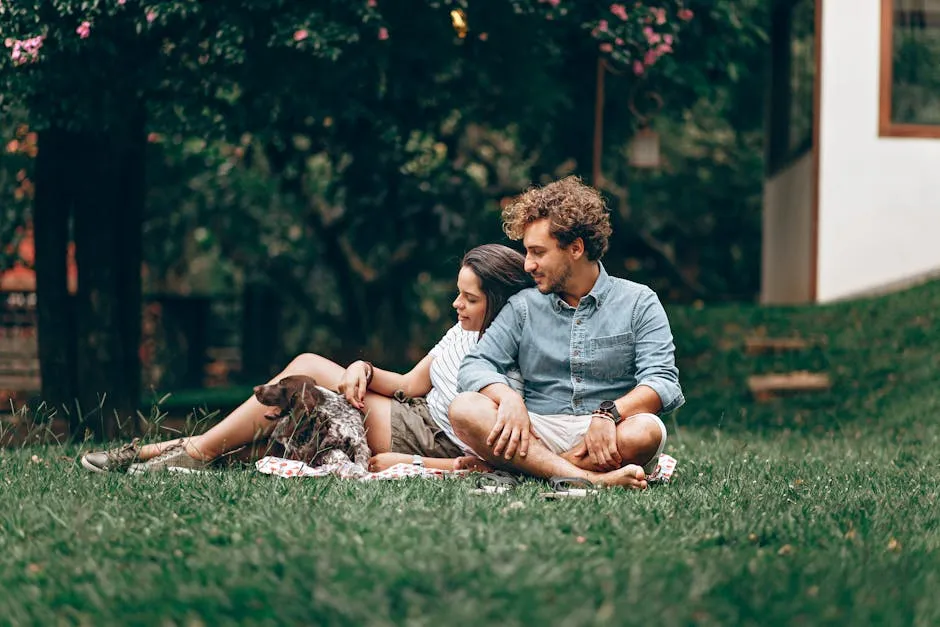
Understanding Dog Socialization
What is Socialization?
Dog socialization refers to the process of exposing your furry friend to various people, environments, and other animals. This exposure is vital in teaching dogs how to behave and respond appropriately in different circumstances. For puppies, socialization usually occurs during their early developmental stages, from about seven weeks to four months old. It’s easier to introduce new experiences to puppies because they are more adaptable and open to new things.
In contrast, adult dogs may carry past experiences—both good and bad—that influence their behavior. They might show signs of fear or aggression towards unfamiliar situations. Socialization for adult dogs often requires more time and care, but it’s definitely achievable!
Why Socialization is Important for Adult Dogs
An unsocialized adult dog can develop a range of behavioral issues. These issues can include fear, anxiety, aggression, or even destructive behaviors. Socializing your dog helps them feel more secure in their environment. It reduces the chances of negative reactions when they encounter new people, pets, or situations.
Moreover, a well-socialized dog can enjoy outings and playdates. They learn to navigate the world around them, making life easier and more enjoyable for both you and your furry companion. This experience promotes a happier, healthier lifestyle—one that includes playdates, trips to the park, and family gatherings without stress or fear.
In summary, socializing an adult dog not only benefits their behavior and mental health but also enhances the bond between you and your dog. It opens the door to a world of fun, exploration, and companionship. So, let’s get started on this exciting journey of socialization!
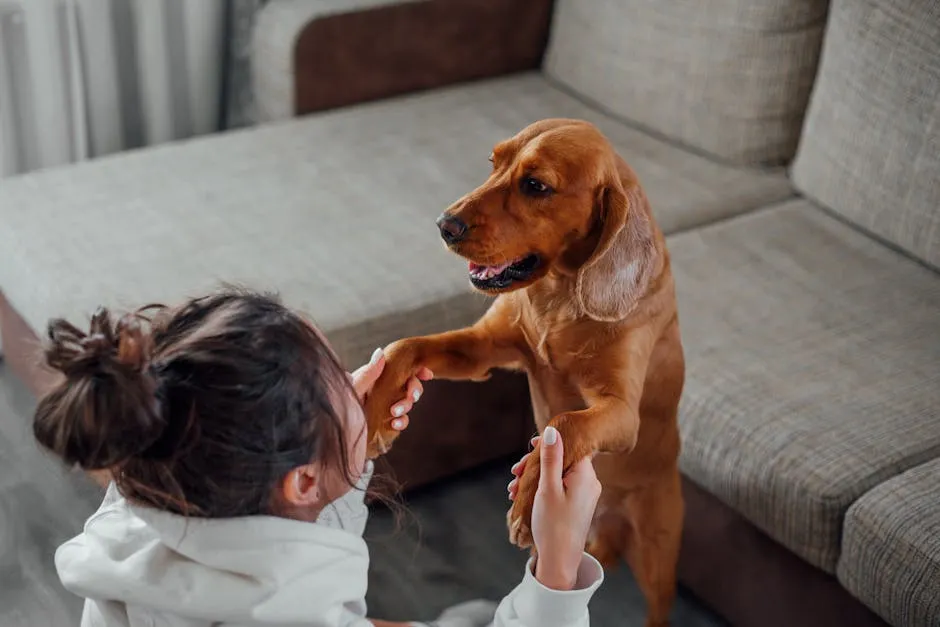
Assessing Your Dog’s Needs
Signs Your Dog Needs Socialization
Every dog has unique quirks, but some signs scream, “I need friends!” If your pup displays fear, aggression, or anxiety around new people or pets, they might need a socialization boost. Here are a few indicators to watch for:
- Fearful Behavior: If your dog cowers, hides, or tucks their tail when meeting new people or animals, it’s a clear sign they need more exposure.
- Aggression: Barking, growling, or lunging at others? This behavior suggests your dog feels threatened. They need gradual introduction to new friends.
- Anxiety: Excessive panting, drooling, or attempts to escape during social situations can indicate stress. If your dog is nervous out on walks or in public spaces, it’s time to intervene.
- Over-Excitement: Does your dog bounce off the walls when they see another pet? While excitement isn’t inherently bad, it can lead to chaotic encounters if not managed.
Consider how your dog’s history might affect them. Some might have had rough past experiences, like early separation from their litter or limited exposure to the outside world. Such factors can create barriers to socializing. If your dog was adopted later in life, their lack of early socialization opportunities might contribute to their current behavior.

Evaluating Your Dog’s Personality
Just like humans, dogs have different temperaments! Understanding your dog’s personality is crucial for effective socialization. Is your furry friend naturally curious and playful, or more reserved and cautious? Here’s how to navigate their unique traits:
- Curious Dogs: These pups often thrive in social situations. They might enjoy meeting new friends and exploring new environments. Encourage their curiosity with controlled introductions to help build confidence.
- Reserved Dogs: If your dog tends to be shy or hesitant, take a more gradual approach. Observe their body language closely during interactions. If they seem uncomfortable, back off and try again later.
- Playful Dogs: Energetic and social canines usually love meeting other pets. However, they can unintentionally overwhelm shyer dogs. Monitor their interactions to ensure everyone feels comfortable.
When assessing your dog’s comfort levels, look for cues like tail wagging, relaxed ears, or playful barks. Conversely, signs of discomfort include stiff body posture, lip licking, or avoidance behaviors. Use these indicators to gauge how well your dog is handling each new interaction. Remember, patience and observation are key!
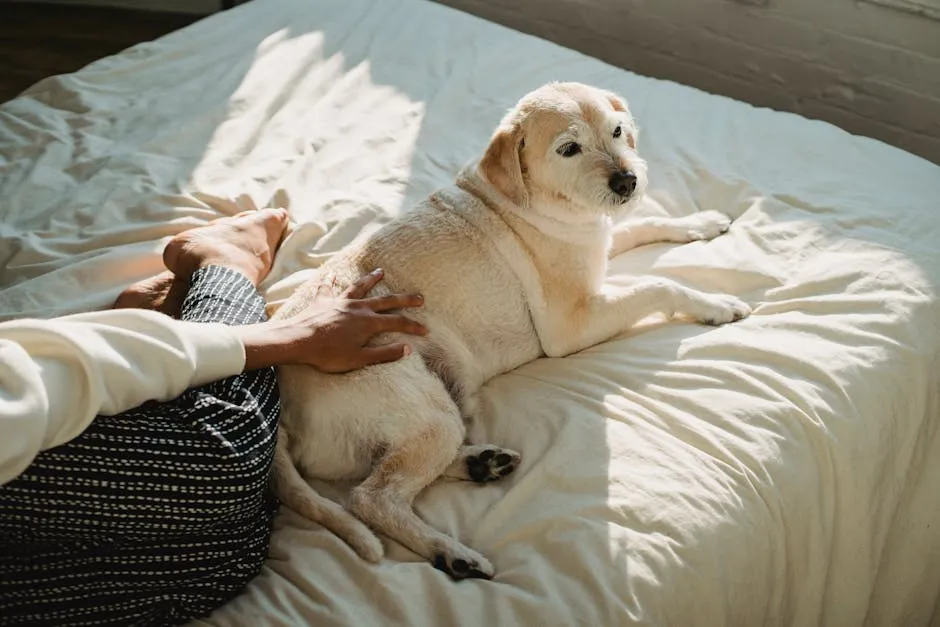
Steps to Socialize an Adult Dog
1. Start Slow: Gradual Exposure
The world can be a big, scary place for an adult dog, so start with gradual exposure to new experiences. Jumping right into the chaos of a dog park might not be the best idea. Instead, opt for low-pressure environments where your dog can feel safe.
Consider visiting quiet parks or outdoor cafes that allow dogs. These settings provide a chance for your pup to observe other animals or people without overwhelming them. Gradually increase exposure by introducing your dog to one new friend at a time.
For example, take a stroll with a calm, well-socialized dog. Allow them to sniff each other while maintaining a comfortable distance. This way, they can get used to each other’s presence without feeling pressured to engage right away.
Another fantastic option is to host a doggy meet-and-greet at home. Invite a friend with a friendly dog over. Let your dog explore the environment and approach the new pup at their own pace. This controlled setting helps build positive associations with social interactions.

To make outings even more enjoyable, consider bringing along some Dog Training Treats. These tasty rewards not only motivate your pup during socialization but also make them associate new experiences with something positive. Who can resist a treat, right?
Always keep an eye on your dog’s body language. If they seem uncomfortable, don’t hesitate to change the environment or take a break. The goal is to foster confidence and trust, allowing your dog to learn that social situations can be fun and rewarding.
2. Controlled Introductions to Other Dogs
Choosing the Right Dog
Selecting the right canine companion for your dog’s socialization journey is crucial. Aim for a well-socialized dog that exhibits calm and friendly behavior. Look for a dog that has a similar energy level to your pup. If your dog is a laid-back couch potato, introducing them to a hyperactive pup might not be the best match.
Start by asking friends or neighbors if their dogs are socialized and friendly. Alternatively, consider reaching out to local shelters or dog trainers. Many trainers have experience with various dog personalities and can suggest suitable candidates. Remember, the goal is to create a positive experience that encourages your dog to open up.
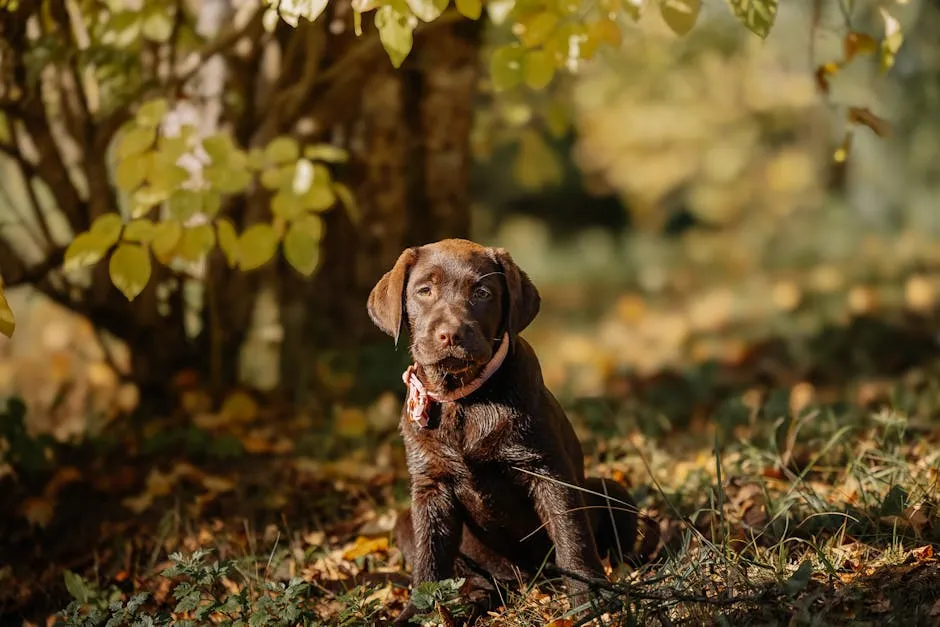
First Meetings
First impressions matter, even in the dog world! To set your dog up for success, follow this step-by-step guide for initial meet-ups:
- Choose Neutral Territory: Pick a location that isn’t owned by either dog. Parks or quiet streets work well. This helps prevent territorial behavior.
- Take a Walk Together: Begin with a leisurely stroll side by side. Keep both dogs on a leash but avoid tension. If one starts to pull, gently redirect their focus.
- Introduce Sniffing: Once everyone seems comfortable, allow the dogs to sniff each other while maintaining a safe distance. This is their version of a handshake!
- Observe Body Language: Watch for relaxed body posture, wagging tails, or playful barks. If either dog shows signs of discomfort—like growling or stiffening—take a step back.
- Short and Sweet: Keep the first meeting brief. If it goes well, gradually increase the duration of future encounters.
- Positive Reinforcement: Reward both dogs for calm behavior with treats and praise. This association with positive experiences will encourage good interactions in the future.
By starting with controlled introductions, you lay the groundwork for successful socialization. Remember, the aim is to create positive associations, allowing your dog to feel comfortable and confident around other furry friends.
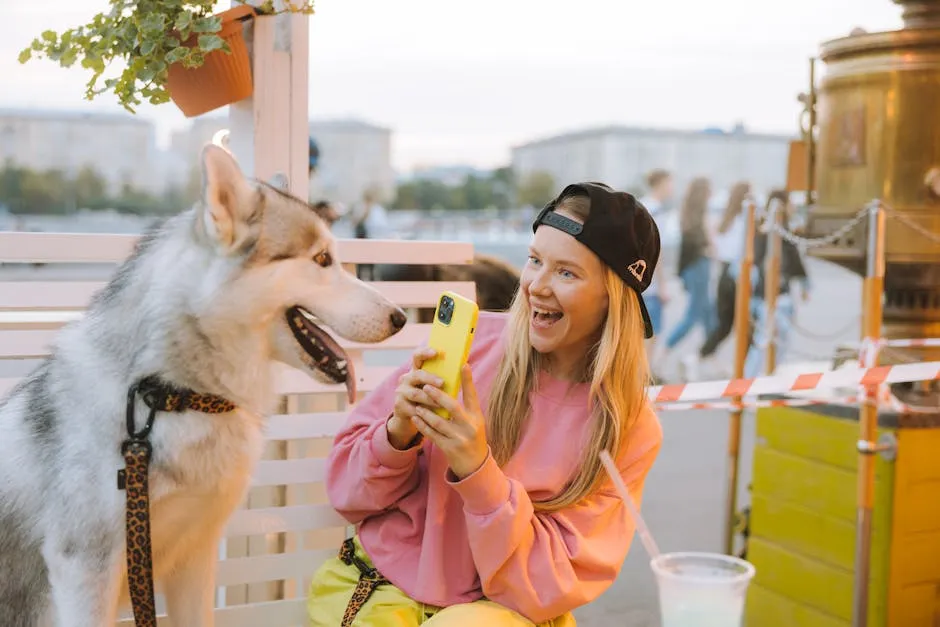
3. Positive Reinforcement Techniques
Positive reinforcement is the secret sauce to successful dog socialization! Using treats and praise, you can motivate your dog to exhibit good behavior. Here’s how to make it work:
- Reward Calm Behavior: When your dog remains calm around other dogs or people, shower them with treats or praise. This helps reinforce their positive reactions.
- Correct Unwanted Reactions: If your dog reacts negatively—like barking or lunging—don’t scold them. Instead, calmly redirect their attention to you. Use treats to draw them back into a positive mindset.
- Be Consistent: Consistency is key! Always reward good behavior and avoid harsh corrections. This approach builds trust, making your dog more receptive to future socialization.
Remember, dogs thrive on positive experiences. By using treats and praise effectively, you’re not just training them; you’re building a strong, trusting bond!

4. Engaging with People
Inviting Friends Over
Hosting friends is a fun way to expose your dog to new people! Here are some tips to ensure a smooth experience:
- Choose a Comfortable Space: Set up in a familiar area of your home, like the living room or backyard. This helps your dog feel secure.
- Let Your Dog Approach: Allow your dog to meet guests at their own pace. Encourage friends to ignore the dog at first. This reduces pressure on your furry friend.
- Treats as Peace Offerings: Have your guests toss treats from a distance. This creates positive associations with new people.
- Keep It Low-key: Avoid overwhelming your dog with too many guests at once. A small gathering is ideal for initial introductions.
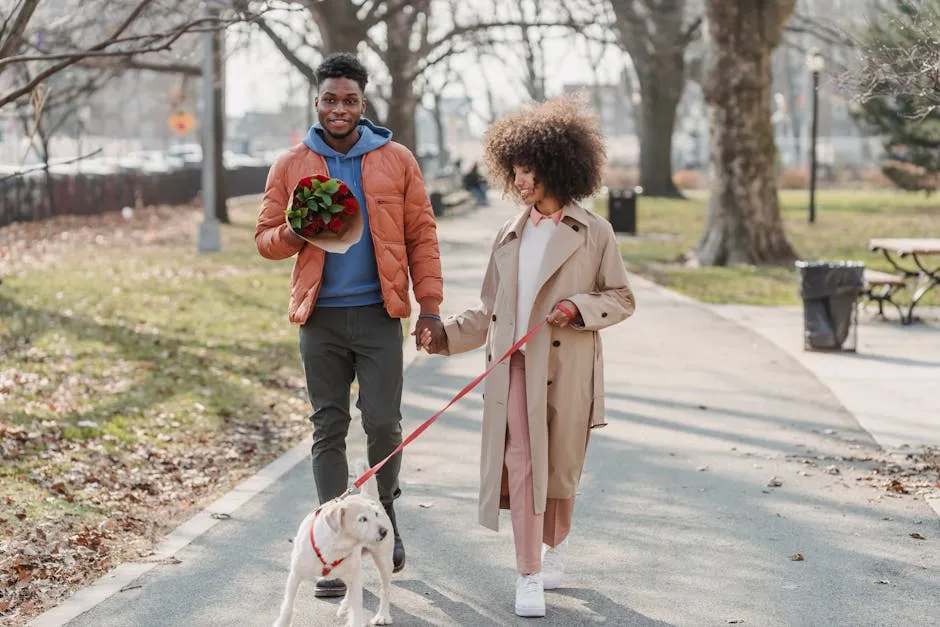
Public Interactions
Taking your dog out in public can be a great opportunity for socialization. Here’s how to navigate these encounters:
- Stay Calm and Confident: Your dog can sense your emotions. If you appear relaxed, they’re more likely to feel at ease.
- Encourage Friendly Greetings: If you meet a friendly stranger, ask if they’d like to greet your dog. Ensure they understand to approach slowly and gently.
- Practice Good Manners: Teach your dog to stay calm when meeting people. Use treats and praise to reinforce polite behavior.
- Monitor Interactions: Keep an eye on your dog’s body language. If they seem uncomfortable, it’s okay to excuse yourself from the situation.
By inviting friends over and navigating public interactions thoughtfully, you help your dog build confidence and social skills. It’s all about creating positive experiences that enhance their comfort level around both people and other pets.
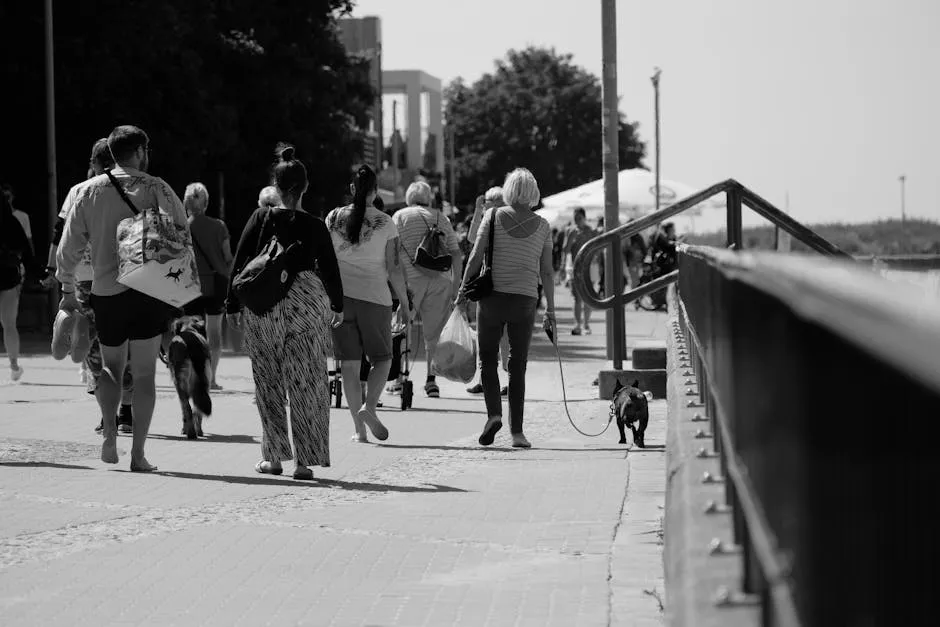
5. Exploring Group Settings
Dog Parks and Daycares
Dog parks and daycare centers can be great places for socializing your adult dog, but preparation is key. Before heading out, ensure your dog is comfortable with basic commands. This can prevent chaos when they encounter distractions.
- Visit Alone First: Consider visiting the park or daycare alone first. Observe the environment. Are there too many dogs? Are they all friendly? This helps you gauge if it’s a good fit.
- Leash Up: Always keep your dog on a leash during initial visits. This gives you control and helps your dog feel secure.
- Start Small: If the park seems overwhelming, do a drive-by. Let your dog sniff the air and take in the sights from the safety of your car. Gradually introduce them to the park experience.
Now, let’s weigh the pros and cons of these environments for socialization.
Pros:
- Variety of Interactions: Dog parks offer a mix of dog personalities. This helps your furry friend learn to interact with different breeds and temperaments.
- Physical Exercise: Playing with other dogs is a great way to burn off energy. A tired dog is often a well-behaved dog!
- Social Skills: Regular visits can improve your dog’s ability to navigate social situations. They learn to read body language and cues from other dogs.
Cons:
- Overstimulation: Too many dogs can overwhelm your pup. Watch for signs of stress, like excessive barking or hiding.
- Unpredictable Behavior: Not all dogs at parks are well-behaved. Aggressive or hyperactive dogs can pose risks.
- Inconsistent Supervision: Dog parks are rarely supervised. This can lead to misunderstandings or conflicts between dogs.
In short, dog parks and daycares can be excellent for socialization, but proceed with caution. Always monitor your dog’s behavior and be ready to step in if necessary.

6. Professional Help
Sometimes, a little extra support goes a long way. If your dog’s socialization journey feels daunting, consider hiring a professional trainer. But when should you make that call?
- Persistent Fear or Aggression: If your dog displays consistent fear or aggression, a trainer can help identify triggers and develop a tailored plan.
- Limited Progress: If you’ve tried socializing techniques without success, a trainer can provide fresh insights and strategies.
- Overwhelming Experiences: If your dog becomes easily overwhelmed, a professional can guide you through gradual exposure methods.
Types of Training Programs:
- Group Classes: These classes offer controlled environments for socialization. Your dog can meet others while under the guidance of a trainer.
- Private Sessions: One-on-one training allows for personalized attention. This is ideal for dogs with specific challenges.
- Behavioral Workshops: These workshops focus on addressing fear or aggression through positive reinforcement.
Professional help can be a game-changer. Don’t hesitate to reach out to a certified trainer to ensure your dog has the best chance at becoming a well-socialized companion.

Overcoming Setbacks
Socializing an adult dog can feel like an uphill battle. But don’t throw in the towel just yet! Setbacks are manageable with the right mindset and techniques. First things first: breathe. Remember, socialization is a process, not a race. Here are some tips to help you navigate those frustrating moments:
- Stay Positive: It’s easy to get discouraged when things don’t go as planned. Keep your attitude upbeat! Dogs can sense your emotions. If you’re anxious, your dog will pick up on it. Stay calm, and your dog will likely feel more secure.
- Break It Down: If your dog struggles with a particular situation, simplify it. For example, if they react to other dogs, try observing from a distance first. Gradually reduce that distance as they become more comfortable. This way, you’re not overwhelming them.
- Celebrate Small Wins: Did your dog sniff another dog without barking? That’s a victory! Celebrate every little progress. Positive reinforcement can boost your dog’s confidence and encourage them to keep trying.
- Maintain Consistency: Consistency is crucial in training. Stick to your routine, and don’t skip sessions. Regular exposure to social situations, even brief ones, helps solidify positive experiences.
- Patience is Key: Socialization doesn’t happen overnight. Each dog learns at their own pace. If you encounter a setback, take a step back, reassess, and adjust your approach. It’s okay to slow down and allow your dog to catch up.
By implementing these strategies, you can effectively tackle setbacks and keep your dog’s socialization journey on track. Remember, every dog can learn to socialize, even if it takes a bit longer!

Conclusion
Socializing an adult dog isn’t just a trend—it’s essential. Remember the key points we’ve covered: start slow, choose the right companions, use positive reinforcement, and practice patience. Socialization can be a game changer for your furry friend, opening doors to new experiences and friendships.
As a dog owner, it’s vital to be patient and persistent. Your dog may not be a social butterfly yet, but with your guidance, they can learn to thrive in social settings. Don’t forget that it’s never too late for an adult dog to learn the ropes of socializing.
So, roll up your sleeves and get ready to embark on this rewarding journey. With love, consistency, and a sprinkle of humor, you can help your pup become the well-adjusted companion you’ve always wanted. Remember, every step forward is a step towards a happier, more confident dog!

FAQs
Please let us know what you think about our content by leaving a comment down below!
Thank you for reading till here 🙂
Using effective positive reinforcement techniques for stubborn dogs can significantly enhance your dog’s socialization experience.
And while you’re at it, don’t forget to keep your pup hydrated during those outings! A Dog Water Bottle with Bowl is a perfect companion for walks and playdates, ensuring your furry friend stays refreshed and ready for fun!
Lastly, if you’re looking for a way to keep your dog entertained and mentally stimulated, consider investing in an Interactive Dog Puzzle Toy. These toys challenge your dog’s brain and keep boredom at bay, making for a happy and engaged pup!
As you embark on this journey, don’t forget to capture those precious moments! A Dog Photography Book can provide tips on how to get that perfect shot of your fur baby in action!
And for those messy moments, having a Dog Training Pads on hand can save your floors and help with the training process.
Speaking of training, don’t forget to grab a Dog Training Clicker to enhance your training sessions and make them more effective!
And for those pups that need a little more comfort, consider a Dog Bed with Memory Foam. They deserve a cozy place to rest after all that socializing!
Finally, if you’re planning to take your furry friend on adventures, a Dog Carrier Backpack can make travel much easier!
All images from Pexels

